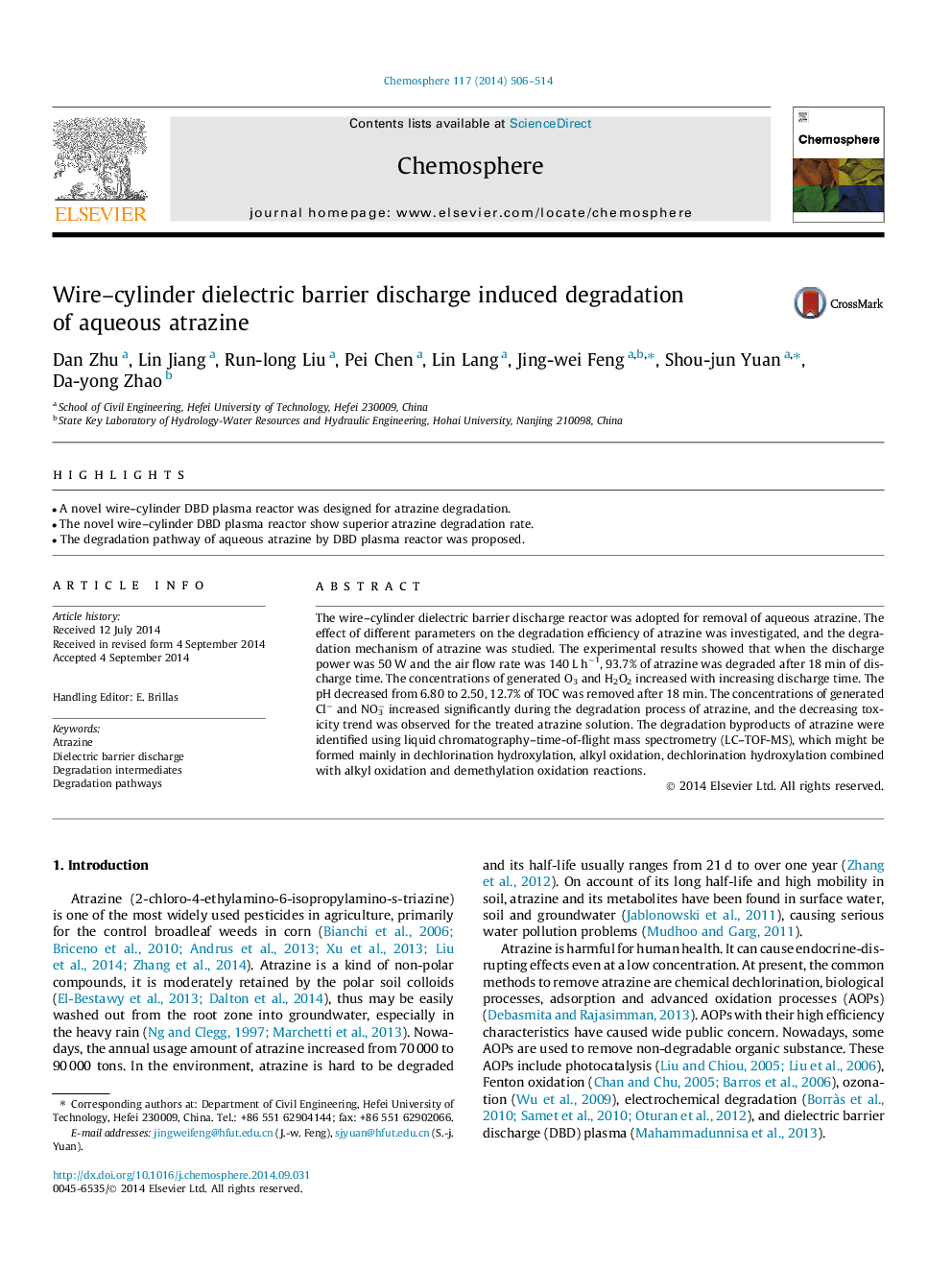| Article ID | Journal | Published Year | Pages | File Type |
|---|---|---|---|---|
| 6308491 | Chemosphere | 2014 | 9 Pages |
Abstract
The wire-cylinder dielectric barrier discharge reactor was adopted for removal of aqueous atrazine. The effect of different parameters on the degradation efficiency of atrazine was investigated, and the degradation mechanism of atrazine was studied. The experimental results showed that when the discharge power was 50Â W and the air flow rate was 140Â LÂ hâ1, 93.7% of atrazine was degraded after 18Â min of discharge time. The concentrations of generated O3 and H2O2 increased with increasing discharge time. The pH decreased from 6.80 to 2.50, 12.7% of TOC was removed after 18Â min. The concentrations of generated Clâ and NO3â increased significantly during the degradation process of atrazine, and the decreasing toxicity trend was observed for the treated atrazine solution. The degradation byproducts of atrazine were identified using liquid chromatography-time-of-flight mass spectrometry (LC-TOF-MS), which might be formed mainly in dechlorination hydroxylation, alkyl oxidation, dechlorination hydroxylation combined with alkyl oxidation and demethylation oxidation reactions.
Related Topics
Life Sciences
Environmental Science
Environmental Chemistry
Authors
Dan Zhu, Lin Jiang, Run-long Liu, Pei Chen, Lin Lang, Jing-wei Feng, Shou-jun Yuan, Da-yong Zhao,
